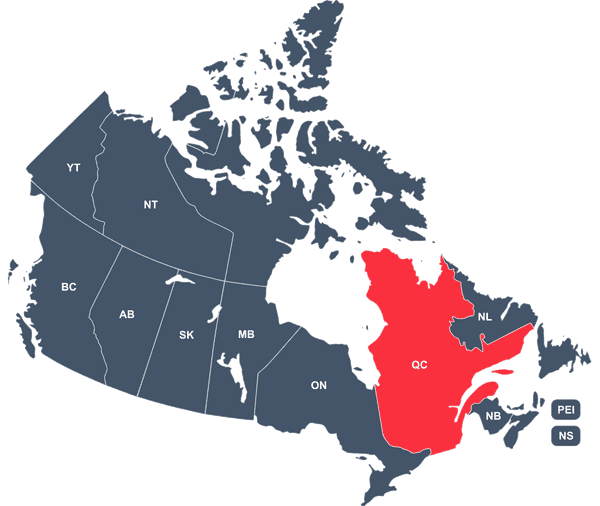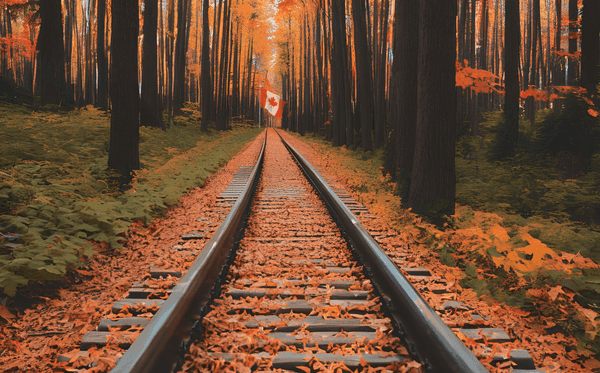5 Best Canadian Cities to Immigrate to
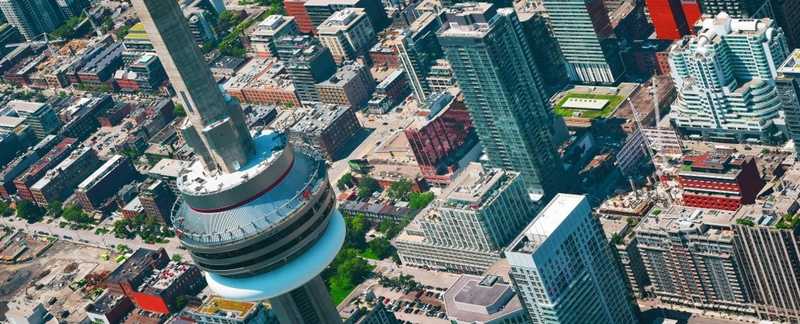

The world-wide migration of people from one country to another is becoming more popular by the day. In 2003, the International Organization for Migration (IOM) made a projection that said by the end of 2050 there will be roughly 250 million migrants worldwide. They were wrong. At the end of 2017, there were already more than 250 million people that lived outside of their birth countries. The latest projection is that by 2050 there will be more than 400 million international migrants. So as you can see, migration across national borders has become an almost every day thing.
If you are looking for a country to immigrate to, Canada is a wonderful option. It is the second largest country in the world but supports a relatively small population of 37 million people (of which roughly 20% are immigrants). The USA, just south of Canada, is the third largest country in the world, but its population is ten times bigger than Canada’s!
Immigrate to Canada
In 2018, roughly 310,000 immigrants received permanent residency in Canada and by the end of 2020, Canada aims to accept 340,000 new permanent residents. On top of that, in 2018 Canada has rated the 5th best country in the world to raise children in. Furthermore, in this year’s U.S News & World Report, Canada was ranked the third best country to live in.
Of course, one cannot base such a large decision on hearsay only. Immigrating is a life-changing move that will have far-reaching consequences on you and your family. So, you have to be absolutely certain that you are doing the right thing before you immigrate to a new country.
Before you Immigrate, Consider the Following:
- What is the climate and weather like in the country you intend to move to?
- How is that country’s Healthcare system?
- Are there high standard schools and universities?
- What languages are spoken in that country?
- Will you be able to find employment?
- Are there sports and culture that you can take part in?
Canadian Cities have it all!
- Majestic mountains and wide-open plains.
- Furthermore, the country boasts with the longest coastline in the world.
- Canada has large lakes, with an abundance of water activities.
- The natural beauty of Canada is unrivalled.
- Temperatures range from -30 °C in winter to 30 °C in the summer months.
- During the winter months, you can see the Northern Lights in some parts of the country.
- Visit marvellously sculpted ice hotels that melt away again come summer time.
- Most Canadians take to the great outdoors from a young age and take part in activities such as skiing, hiking and kayaking, to name but a few.
- The cities are clean and the citizens are friendly.
- More often than not, the tap water in Canada is cleaner than bottled water.
- Additionally, the country has nearly no air pollution.
- Crime rates and the unemployment rate is very low throughout Canada.
For South Africans that are looking to relocate to another country, Canada might be your best bet. Visit the Canada Abroad website for more information. We will lead to step by step through the application process. To help you decide on where to make a new start once you get there, here are the five best Canadian cities to immigrate to:
1. Calgary, Alberta

Demographics & General Info:
Nicknamed the cultural capital of Canada, Calgary is situated where the Bow and Elbow Rivers meet. It is roughly 80 kilometres east of the Rocky Mountains. In The Economist magazine’s 2018 Global Liveability Ranking, Calgary was ranked the 4th best city to live in globally. With nearly 1.3 million people, Calgary is the largest city in Alberta. It is also one of the oldest human settlements in the world, as some of the First Nations have been living at the confluence of the Bow and Elbow Rivers since 9000 B.C. The city’s name is being contested by at least two different indigenous tribes, but for now, it remains Calgary.
Calargy is the Economic hub of Alberta
Calgary is the Economic Hub of Alberta, being home to the second most corporate offices among Canada’s 800 biggest corporations.
A large part of the economy centres around the following: the exploration, extraction and export of natural gas.
However, Alberta Health Services is still by far the largest employer in the city. Calgary has a diverse economy, that ranges from the extraction of raw minerals and gas to transportation services to telecommunication. There are plenty of job opportunities for people from all industries.
Youth activities & Education:
The library in Calgary is the second largest one in Canada and with over 175 schools and more than 120 Universities and Colleges, Calgary is more than equipped to cater for families with children. Canada Abroad handles all the paperwork for Family Class Applications and will help you and your family to relocate to Calgary if you choose to move there.
Weather & Nature:
The dry and humid climate and average temperatures during the day that range between 24˚C in summer and -3˚C in winter gives Calgary the warmest winter among all the prairie cities. This is also due to the city’s location; it is close to the Rocky Mountains and higher than the surrounding cities. Its close proximity to the Bow River causes ice fog when the temperatures drop below -17˚C and hoar frost is common on vegetation when temperatures reach -20˚C.
The dry and warm Chinook winds are welcomed every once in a while in winter times and can heat the city up by 20˚C to even 30˚C higher in mere hours and keep it that way for days. A sharp contrast to winter temperatures are the hot summer days, sometimes exceeding 29˚C, but the evenings cool down again due to its dryness and elevation. It rains mainly around June and the most snow falls in March.
Arts & Culture:
Another great characteristic of Calgary; the Nat Christine Centre is home to the Alberta Ballet dance company – the third largest dance company in Canada. The well-known Arts Commons, previously known as the EPCOR CENTRE for the performing arts, is right next to the City Hall and the Olympic Plaza and houses many performances throughout the year.
Sports:
Calgary was the very first Canadian city that hosted the Olympic Winter Games in 1988. With plenty of prairies, foothills and 19 indoor ice rinks for hockey, broomball, figure skating and ringette, there’s so much to entertain and appreciate about Calgary. The famous Calgary Flames is the professional ice hockey team and calls this city home. There is also an annual Calgary Stampede that is now a world famous rodeo – one of the greatest existing outdoor shows.
2. Ottawa, Ontario

Demographics & General Info:
Ottawa is the capital city of Canada and with its population of just under a million people, it is the fourth-largest city in Canada. Positioned in the south-eastern corner of Ontario, it is just across the Ottawa River from French-speaking Gatineau in Quebec. The Gatineau and Rideau rivers, as well as the Rideau Canal mouth out in Ottawa. Because Ottawa lies in the valley between two ancient fault lines, it is lower in elevation than the surrounding country. This causes cold arctic air to flow into the valley during the coldest part of the winter. When this happens, the Rideau Canal freezes over and creates the world’s biggest skating rink of about 7.8 km. Every now and then Ottawa experiences a light earthquake, but nothing more than a 5.2 earthquake has been recorded there.
In 2018, The Telegraph, a British newspaper, stated that Ottawa was the fourth cleanest city in the world. The capital of Canada was designed with an extensive greenbelt in the city, which, in no small extent, has prevented urban sprawl. On top of that, the City Council implements a cycle sharing scheme and, in doing so, encourages its citizens to get rid of privately owned motor vehicles.
The actual name “Ottawa” is a derivative of the Algonquin word, Odawa, which means “to trade”. In olden times, Aboriginal people travelled down the rivers that meet where Ottawa is located to trade. And now, Ottawa is one of Canada’s high-tech hubs. Some other significant employers in Ottawa include:
- Health Care Industry
- Finance
- Business
- Sales
- Administration
Citizenship and Immigration Canada does routine draws of potential candidates specialised in certain areas. To be granted Express Entry into Canada without job offers; find out more online at Canada Abroad.
Youth activities & Education:
Canada is one of the best-educated countries in the world and Ottawa currently holds the title of Canada’s most educated city. According to the 2016 Canadian census, 43.45% of Ottawa’s citizens held a bachelor’s degree or higher qualification.
 Ottowa holds the title of Canada’s most educated city.
Ottowa holds the title of Canada’s most educated city.Ottawa is ranked as the 6th friendliest city for students in Canada and is home to the National Research Council of Canada and Ottawa Hospital Research Institute. Both of the top universities in the city – The University of Ottawa and Carleton University are ranked among the top 500 on the 2018 Best Global Universities Ranking.
Algonquin College, along with La Cité Collégiale, are the two leading public colleges. Dominican University College and Saint Paul University are the two Catholic universities in Ottawa. The school boards are English, English-Catholic, French and French-Catholic and combined. There are over 310 schools in Ottawa, and the public library has more than 2.3 million items alone.
Weather & Nature:
The climate in Ottawa ranges from very warm in summer to ice cold in winter. Between summer and winter, temperature differs with more than 40 °C! For nearly a third of the year, Ottawa is under a snow blanket and temperatures drop as low -15 °C in January. The summer months are warm and wet. One can expect it to rain every third day from May to October. There can be about 940 millimetres of precipitation yearly and about 46% of sunshine. Fall and spring temperatures can vary greatly because of the arctic winds that blow in from the north.
Arts & Culture:
Culturally, the focal points in Ottawa include the ByWard Market, the Golden Triangle and Parliament Hill. The biggest festival in Canada, Winterlude, is hosted by Ottawa, along with other major festivals like the Bluesfest, Canada Day celebrations, Ottawa Dragon Boat Festival, Canadian Tulip Festival, Ottawa International Jazz Festival, The Folk Music Festival, and the Fringe Festival.
The city also boasts of twelve different museums and 2 galleries, one of them is the Canadian Museum of History, which is the country’s most visited museum. The longest-running community theatre company is the Ottawa Little Theatre and the National Arts Centre is also found in this remarkable city, housing the National Arts Centre Orchestra, the Ottawa Symphony Orchestra as well as the Opera Lyra Ottawa. Local plays in Canada are mainly produced by the Great Canadian Theatre Company.
Sports:
The city brags with its own professional ice hockey team, the Ottawa Senators, who play in the National Hockey League and also in home games that take place at the Canadian Tire Centre. Then there is also the Ottawa Redblacks, the professional Canadian Football team, Ottawa Fury FC professional soccer club, the Ottawa Champions professional baseball team and last but not least, the Ottawa Skyhawks professional basketball team.
3. Burlington, Ontario
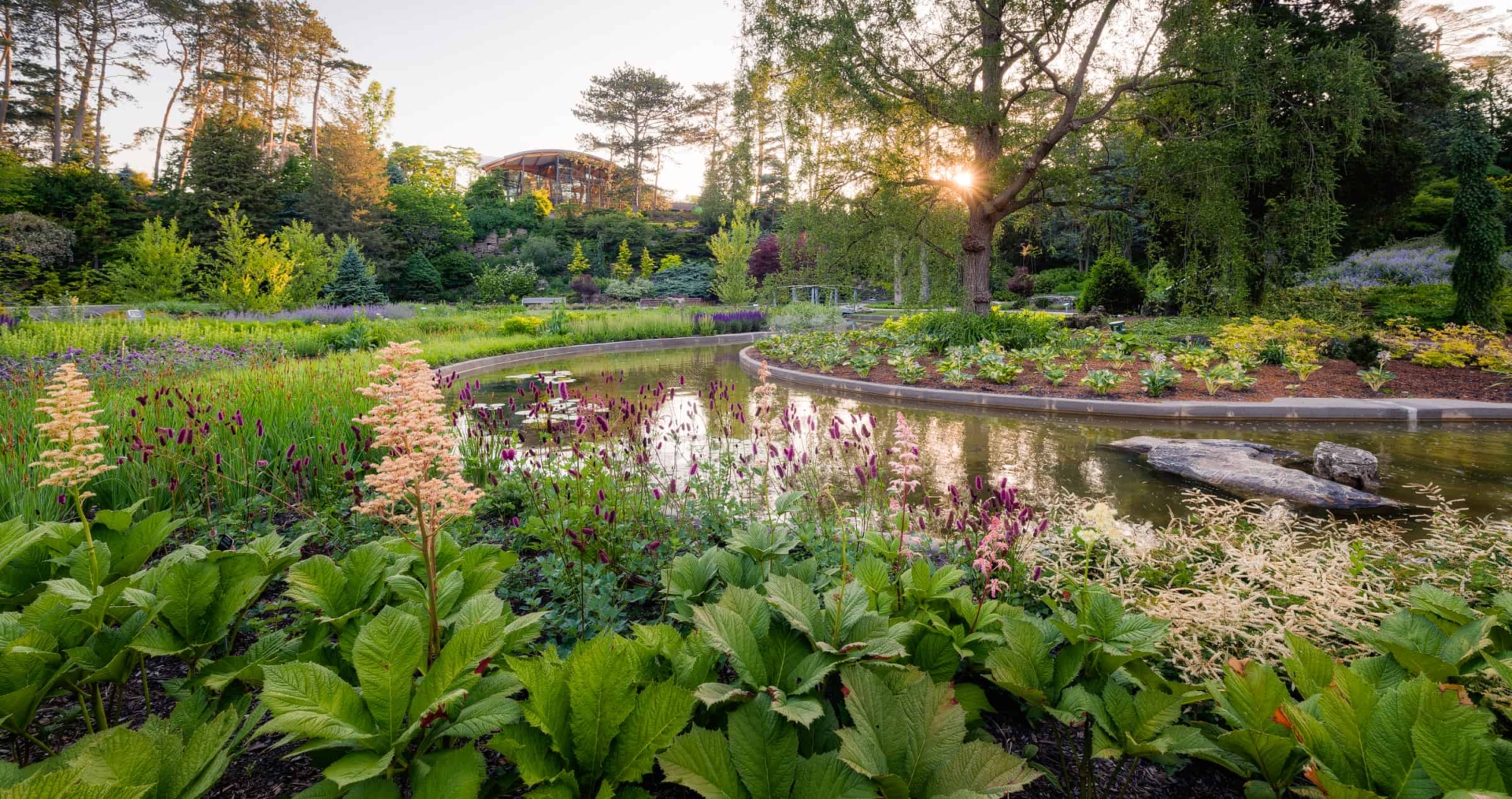
Demographics & General Info:
Nestled on the north-western shore of Lake Ontario in the Halton metropolitan census area, Burlington, along with Milton, forms the western tip of the greater Toronto area. With a population of 183,000 people, it falls within the top 30 most significant cities in Canada. Burlington is slap bang in the geographic centre of the Golden Horseshoe, a densely populated area that wraps around the western tip of Lake Ontario. Approximately 55% of Ontario’s population lives in the Horseshoe area, and it houses some of the most significant industrial production facilities in the country. Apart from production, the automotive sector is booming. Additionally, the public sector is also one of the largest employers in Ontario.
Nestled on the north-western shore of Lake Ontario in the Halton metropolitan census area, Burlington along with Milton forms the western tip of the greater Toronto area. With a population of 183,000 people, it falls within the top 30 biggest cities in Canada. Burlington is slap bang in the geographic centre of the Golden Horseshoe, a densely populated area that wraps around the western tip of Lake Ontario. Approximately 55% of Ontario’s population lives in the Horseshoe area and it houses some of the biggest industrial production facilities in the country. Apart from production, the automotive sector is booming and the public sector is also one of the largest employers.
Youth activities and Education:
There are 29 public elementary schools, 14 Roman Catholic elementary schools, 8 public high schools and 3 Catholic high schools in Burlington with 10 high school sports teams. There are also 13 private schools, 2 universities and the Canadian College of Dental Health. There are 4 indoor and 2 outdoor pools, 9 ice pads and golf courses and amazing hiking trails can be found in and around Burlington.
The city also houses the Burlington and Appleby Malls, the Mapleview Centre and many upscale stores such as Guess, Victoria Secret and the Banana Republic. Burlington has a Teen Tour marching band called The Redcoats who represents the city all over the world. The Junior Redcoats performs at local events like the Sound of Music Parade. There is also the Burlington Concert Band composed of only local volunteer musicians. Burlington also has 17 active scout groups in the area.
Weather and Nature:
Because of how close Burlington is to Lake Ontario, the city experiences moderate climes. Summers can get hot with maximum temperatures reaching up to 28°C, while the winters are cold, but not exceptionally so – by Canadian standards. Minimum temperatures seldom drop below -6°C. It rains all year round, amounting to around 878 millimetres of rain per year.
During the winter months, one can expect some snow, but the annual snowfall of the area is relatively low at 99 centimetres per year. The Niagara Escarpment, a UNESCO World Biosphere Reserve, runs through some western parts of the city and has a thriving area of ancient Carolinian forest where some of the trees are more than a thousand years old. The Bruce Trail, Canada’s oldest footpath makes for excellent hiking where, if one is lucky, you can see rare animals like the southern flying squirrel.
Burlington experiences warm summers with temperatures reaching up to 28°C.
If you like to spend time on the lake, Spencer Smith Park has a lovely lake-shore walking path and a pier that reaches into the lake. You can also visit the Mount Nemo Conservation area just outside the city to spend a day in the great outdoors. Maybe you prefer the Royal Botanical Gardens (RBG) in Burlington – the biggest botanical garden in all of Canada. It spans 11 square kilometres and showcases the world’s largest lilac collection. There are 27 kilometres worth of trails through the RBG, so you can spend a long time there without visiting the same area twice. With about 580 ha of parkland and 115 parks in the city, Burlington is without a doubt one of the most beautiful cities for nature lovers to immigrate to.
Arts and culture:
Other attractions in this beautiful city include the Art Gallery of Burlington, the Joseph Brant Museum and Ireland House, a Performing Arts Centre, the Largest Ribfest, the Lakeside Festival of Lights as well as the Sound of Music festival among others. The world-renowned Jim Carrey attended schools in Burlington and Walk Off the Earth is an alternative rock band that originated there.
Sports:
The Ontario Provincial Junior A Hockey League Team, called the Burlington Cougars, is one of the city’s most popular teams. Other sports teams in Burlington include the Lions Optimist Minor Hockey Association, the Barracudas Girls Hockey Teams, the Skyway Roller Derby and many more teams for the likes of football, basketball, baseball, soccer and even Volleyball. The Burlington Youth Soccer Club boasts with the title of being the second biggest soccer club in all of North America. Then the Burlington Skating Club also has a Canadian Senior champion winning synchronized skating team, NEXXICE.
4. St. Albert, Alberta
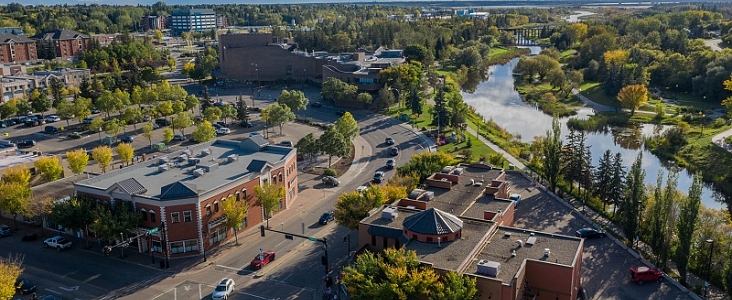

St. Albert Place Complex.
Demographics & General Info:
Situated on the banks of the Sturgeon River, just north-east of Edmonton in Alberta, St. Albert is a beautiful, nature-rich city. With a population of 65,500, it is the 6th largest city in Alberta. St. Albert has a vast network of multi-purpose trails that follows the river’s course and winds in and out of the city’s neighbourhoods. Known as the Red Willow Trail, these trails help to keep the inhabitants of St. Albert happy and fit. In 2014, MoneySense Magazine rated St. Albert the best place to live in Canada and in both 2015 and 2016, it was rated the Best Small City in Canada. On top of that, it also ranked at number 4 when it comes to Canadian cities to raise a family in. Last but not least, Readers Digest ranked St. Albert as the healthiest city in Canada.
With unemployment rates of less than 5%, St. Albert has an impressive business sector and a thriving economy. The average household income of St. Albert’s residents is higher than the national average income per household and the real estate market is expanding into exciting new areas. Moving away from single family homes, the city has allowed for the development of larger houses and modern apartments. Getting around in St. Albert is made easy with the St. Albert Transit system or StAT for short, which consists of 55 buses that run daily. It is also a cycle-friendly city and the inhabitants are encouraged to use green transport options.
Youth activities & Education:
For children in St. Albert there is more than just an excellent educational system available. This city has a Children’s Theatre group that does two large musicals every year and they can participate in plenty of summer camps. There is also The Northern Alberta International Children’s Festival in St. Albert, attracting over 40,000 participants over 5 days, at the end of May which is one of the longest-running children’s festivals in North America; it teaches them of various cultures and offers performances of music, puppetry, dance, clowning, acrobatics, and, of course, theatre.
St. Albert has more than 25 elementary, Junior High and High Schools, as well as 5 universities and colleges. Athabasca University has a Centre for Innovative Management in St. Albert and the Northern Alberta Institute of Technology has an applied research centre, as well as a business incubation space in St. Albert, among other great educational facilities, rating this city high on the list of quality education available as well.
Weather & Nature:
This is a city that experiences all seasons with summer temperatures ranging between 25˚C and 12˚C and winter temperatures can be anything from -5˚C to -17˚C. They have summer rainfall with up to 65 mm of rain in July alone. The Sturgeon River gives life to a beautiful natural habitat, along with a few small ponds that attract avid birdwatchers and two ravines with hiking trails for the nature lovers.
Arts & Culture:
St. Albert Place is the main attraction for many residents in this city, apart from it being situated in the heart of downtown, so many community activities and events from civic government affairs to cultural happenings take place there. The Public Library, Visual Arts Studio, Musée Héritage Museum and Arden Theatre are currently housed by this original building. It was designed by the world-renowned Canadian architect, Douglas Cardinal, who created a building with features that flow like the meandering Sturgeon River next to it. There are also plenty of festivals and events like the Kinsmen Rainmaker Rodeo to look forward to.
The largest Outdoor Farmers’ Market in Western Canada attracts approximately 12500 people, every Saturday from June to October.
Another big attraction for approximately 12 500 people is the largest Outdoor Farmers’ Market in Western Canada, running every Saturday from June to October. There is also an annual Harvest Festival at St. Grain Elevator Park and two more annual events, namely the St. Albert Rotary Music Festival and the Mambos & Mocktails – three hours of jazz at Bellerose High in December. The Rock’n August week-long festival in St. Albert is celebrated by about 6 000 Rock and Roll fans. Then there is also the Cheremoch Ukrainian Dance Festival at the Arden Theatre in the second week of May.
Sports:
All sports are supported in St. Albert schools, namely basketball, bowling, wrestling, track golf, tennis, and volleyball, baseball, softball, and football, soccer, cross country, dance squads, gymnastics, cheer-leading, and swimming. Canada Abroad can organize any forms of visas or permits if you should choose to visit or immigrate to St. Albert.
5. Delta, British Columbia
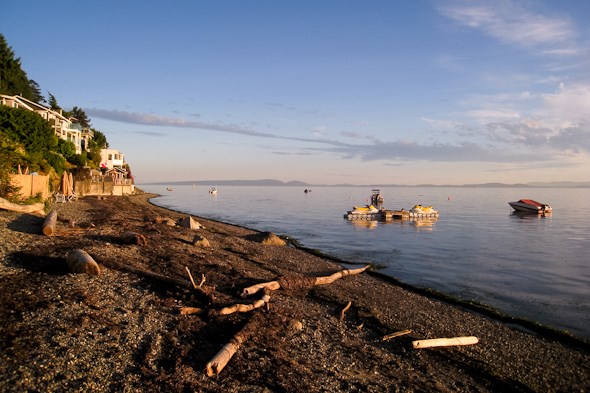
Demographics & General Info:
Forming part of the greater Vancouver area in British Columbia, Delta is located to the south of Richmond. To the north lies the Fraser Rover with Surrey to the east and the USA to the south. The city has a population of about 110,000 out of which more than 35% consists of minority groups. On average the household income of Daltans is 30% higher than in the rest of Canada. In 2016 Delta won the Small Business Roundtable Open for Business award and was ranked 2nd for the city of the future for business friendliness and 5th for infrastructure by FDI Intelligence (https://www.fdiintelligence.com/). The City of Delta is in the amazing position of having no debt and as such it has the power to support fledgeling businesses and stimulate expansion in the industrial and agricultural sectors.
Delta is still home to some of the Tsawwassen First People, after whom one of the three City of Delta districts is named. Tsawwassen houses about a fifth of the City of Delta’s population and makes up the sunny south-western part of Delta. North Delta is the most densely populated district with just over half of the population living in its suburbs, whereas Ladner is more focussed on agriculture and has a smaller population. During the winter months, temperatures drop to a minimum of -7 °C, which is mild by Canadian standards. In the summer months, temperatures fluctuate between 7 °C and 23 °C.
Youth activities & Education:
There are 24 elementary schools and 7 secondary schools in the Delta School District. From the more alternative type of education found in Montessori schools to traditional education can be found in Delta. The city also runs a community college and The Delta Manor Education Centre (DMEC).
A lot of new families settle in the City of Delta because it is a safe neighbourhood with lots of fun outdoor activities to keep the little ones occupied. You can visit the Big Splash Waterpark that offers an amazing variety of water slides, including the only Boomerang Tube Slide in western Canada. Then there is also the Sungod Recreation centre that boasts five different pools to keep the children occupied while you steam it off in the sauna. Watershed is also a favourite among the locals, as the natural beauty is abundant and the mountain biking trails are well maintained and clearly marked out.
Weather & Nature:
Winters are mild by Canadian standards as temperatures seldom drop below -7 °C. Annual rainfall is around 1115 millimetres per year and it peaks during the winter months around November/early December. It also snows during the winter, with an average of around 300 millimetres per year. The summer months are mild with long days where the sun shines for up to 16 hours a day over June and July.
Winters in Delta City are mild to Canadian standards, with temperatures seldom dropping below -7°C.
Delta City is home to Burns Bog, making it the largest undeveloped urban area on the North American continent and the biggest raised bog on the west coast of the Americas. The bog was once used for agricultural purposes and for peat mining, but once the inhabitants realized the damage they were causing the environment the city declared it a conserved area. Burns Bog houses 175 bird species as well as 41 kinds of mammals, 11 amphibians and 6 reptiles. Then, of course, there is a host of more than 4000 invertebrates.
Arts & Culture:
The Delta Museum is currently in the process of moving from its previous site in the Historic Municipal Hall to 4450 Clarence Taylor Crescent, where it will proudly exhibit the natural history of Delta and the surrounding areas. Over the past 5 years, the City has also been co-hosting the Delta/Surrey Regional Heritage Fair, where children from both elementary and secondary schools create projects on Canadian history and showcase it at this prestigious event. The inhabitants of Delta celebrate the end of summer with the Luminary festival. At this festival, citizens dress up in illuminating costumes and create lanterns to participate in the Parade of Lights.
Sports:
There are plenty of indoor and outdoor recreation centres throughout Delta. With 9 multidisciplinary sports courts, 4 tennis courts and 4 lacrosse boxes, there is plenty of room to participate in a sport of your choice. The two outdoor swimming pools are free to use over the weekends and public holidays, so the entire family can go and have fun by the pool. If you prefer extreme sports, there are plenty of opportunities for mountain biking and water sports in and around Delta. The City also hosts the annual Tour de Delta cycle challenge every year.
